- Home
- Art History
- Birth of Art
The Birth of Art
|
Some form of art exists everywhere on the globe. |
Early cave art is a record of human intelligence, imagination and creative power. |
The question of when humans began to make art cannot be answered. |
The first craft developed appears to be tool-making. Tools are found amongst the remains of cave dwellings and rock overhang shelters of the ancient Ice Age inhabitants. Therein also are found painted, incised and sculpted images of animals on the rock walls.
Old Stone Age
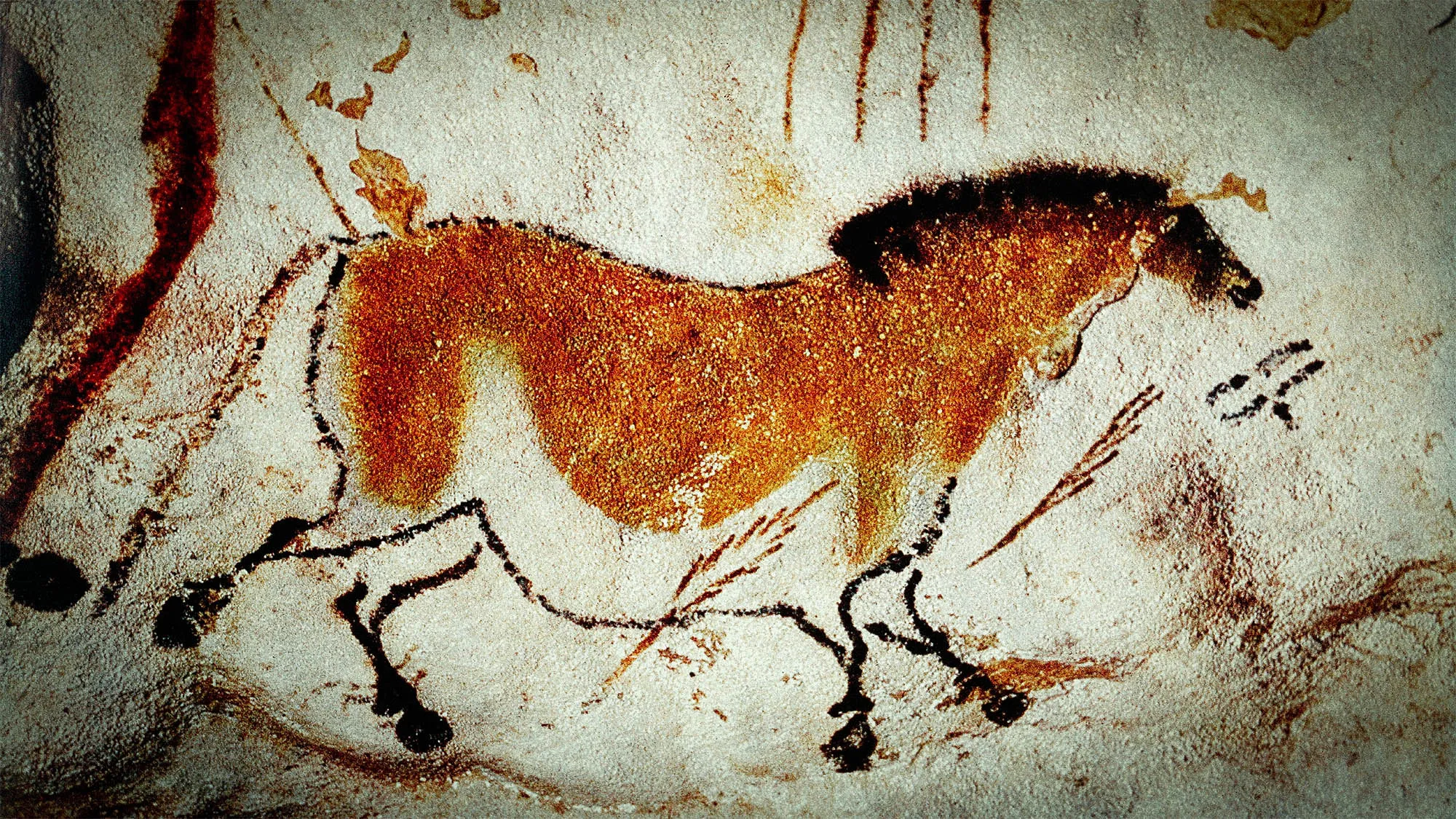
In southern France and northern Spain explorers continue to find cave markings - that which humans use to exert control over their environment - the use of images and symbols. The faculty of imagination came into being along with the concepts of identity and meaning.
During the Ice Age, humans, of the Stone Age, developed a system of representation that remains with us in the twenty-first century.
See: Lascaux Caves | See: Cave of Altamira
Cave Art
Engraved ochre sticks found in South Africa are said to be 77,000 years old, the oldest known works of art. These pieces are decorated with criss-cross lines scratched into the rock to form geometric patterns.
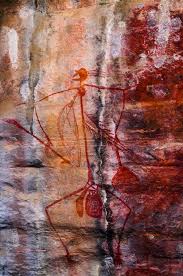
In northern Australia rock paintings date back to 40,000 BC. This example of ancient rock art, a running hunter, seems to have a ritual purpose - to increase animal populations, presumably to be hunted.
Home to the world's largest complex of petroglyphs (rock engravings) is found in the islands off the west coast of Australia. These animal "drawings" are dated to c. 28,000 BC.
The pictures in caves never appear at the mouth of the cave, but in the darkest and deepest recesses, as far from the entrance as possible. This practice of "hiding" the artwork kept the works secret and protected from would-be vandals for millennia.
The Magical Function
Cave paintings go back to 30,000 BC. Their meaning may be religious or magical. Some images are of animals, some are of humans, some are abstract.
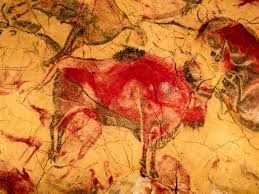 Cave paintings from Spain dating back to 16,000 BC show some of the first artistic attempts at multi-colored three-dimensional depiction.
Cave paintings from Spain dating back to 16,000 BC show some of the first artistic attempts at multi-colored three-dimensional depiction.Cave painting from Africa dating to 9,000 BC were not revealed to the broad international public until 2002, when a team of French archaeologists explored them.
Land Art
Land art was found in Peru in such monumental proportion as to be called geoglyphs. The Nazca Lines in the Andean foothills of the Peruvian coastal plain form images of humans, vegetation, mammals, birds, and fantastical beings, connected by a series of lines. Some of the figures measure 200 meters and the complex of images cover 500 square kilometers.
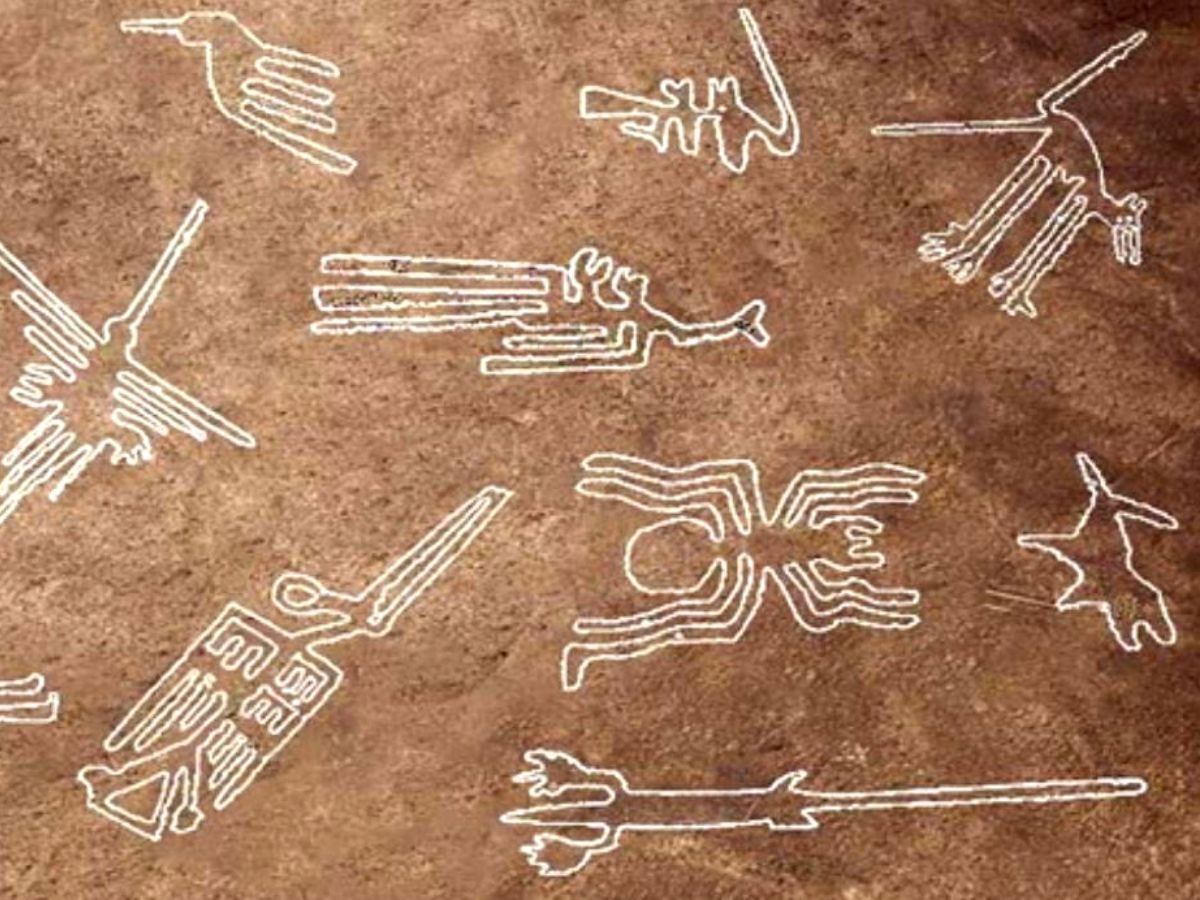 Nazca lines in Peru, c. 200 BC to 600 AD.
Nazca lines in Peru, c. 200 BC to 600 AD.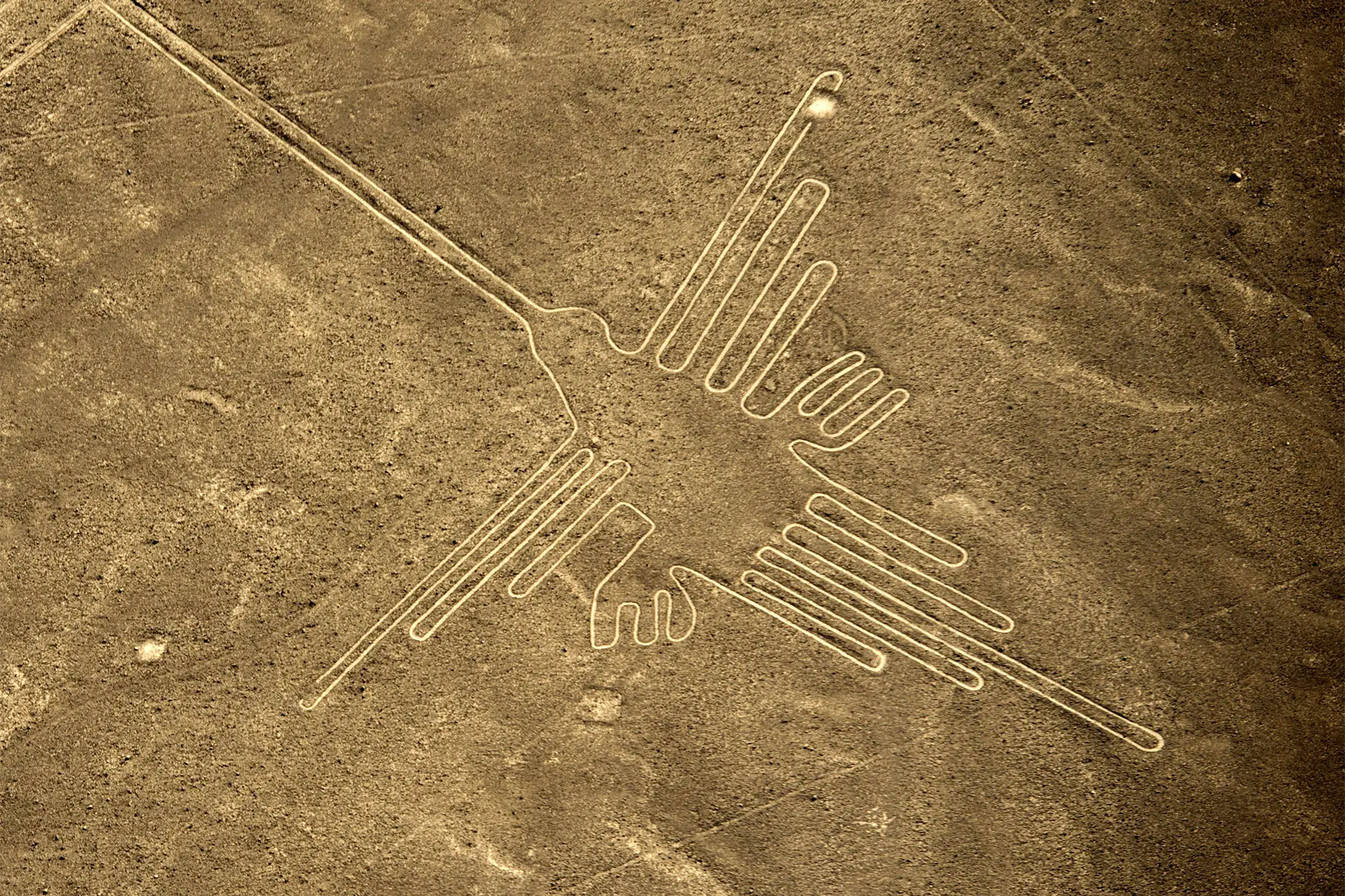 Nazca hummingbird, 50 m long.
Nazca hummingbird, 50 m long.Middle Stone Age
The Representation of Man
The figure of man is almost completely excluded from representation among the vivid troops of painted animals until the Middle Stone Age
 Venus of Willendorf - from Austria - a female fertility figurine.
Venus of Willendorf - from Austria - a female fertility figurine.Apart from large-scale cave art, humans also produced small, hand-sized drawings and carvings in bone, horn, or stone.
The anatomical exaggeration of this Venus figure suggests that this and similar statuettes served as fertility fetishes. The artist's approach to the human figure differs from that to animals. Facial features are seldom indicated in these statuettes. The artist's aim was not to show the female of his kind but rather the idea of female fecundity; he depicted not the woman but fertility.
Rock Shelter Paintings
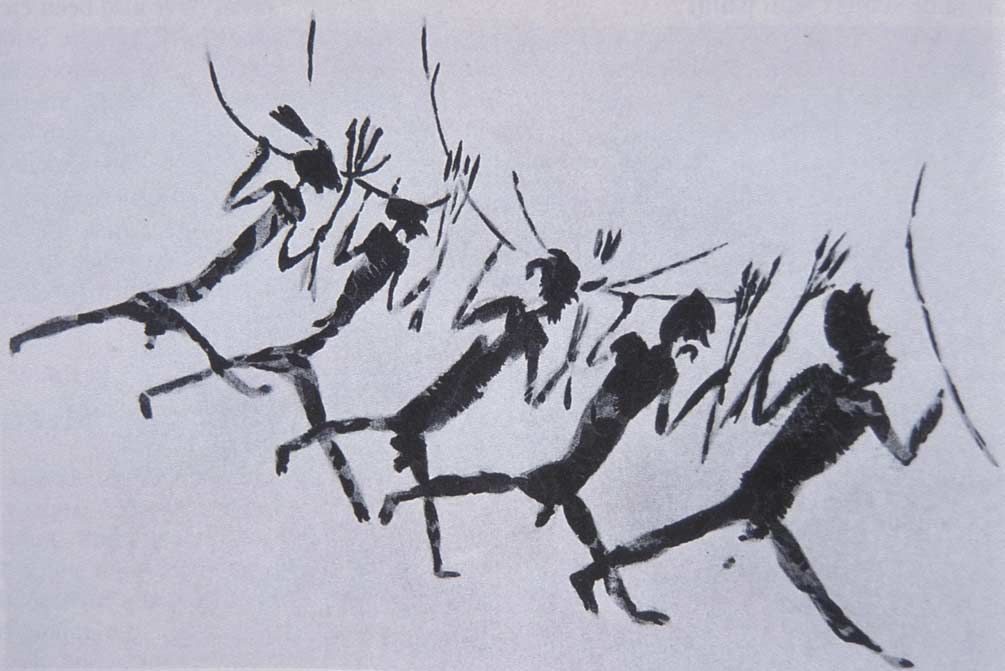 Five warrior figures - Gasulla Gorge, Spain.
Five warrior figures - Gasulla Gorge, Spain.In the Middle Stone Age or the Mesolithic period, ancient paintings begin to show human figures - energetic warriors were found in Spain
New Stone Age
In the Neolithic period, humans developed agriculture and domesticated animals. the wandering hunters settled near their field s and their animals. The exit from the Stone Age was marked by the development of writing and measurement - tools for communication. These achievements were expressed through new religious and burial customs and modes of marking sacred and sepulchral places with monumental stone.
The Megaliths
In the extreme west of Europe, northern France, Ireland and England, monuments of rough-hewn stones have puzzled and fascinated for centuries. The size of the stones, as much as seventy feet and weighing tons, have prompted historians to call them megaliths or great stones - and the culture that produced them as megalithic. These structures appear around 3,000 BC. Among the several types of megalithic structures are the dolmen, consisting of several great stones set on end, with a large covering slab. Some single stones, called menhirs, set on end were arranged in parallel rows, some going for miles, including thousands of stones. Art historians attribute their purpose as ritual or religious: having to to do with tombs, the dead, or sun worship.
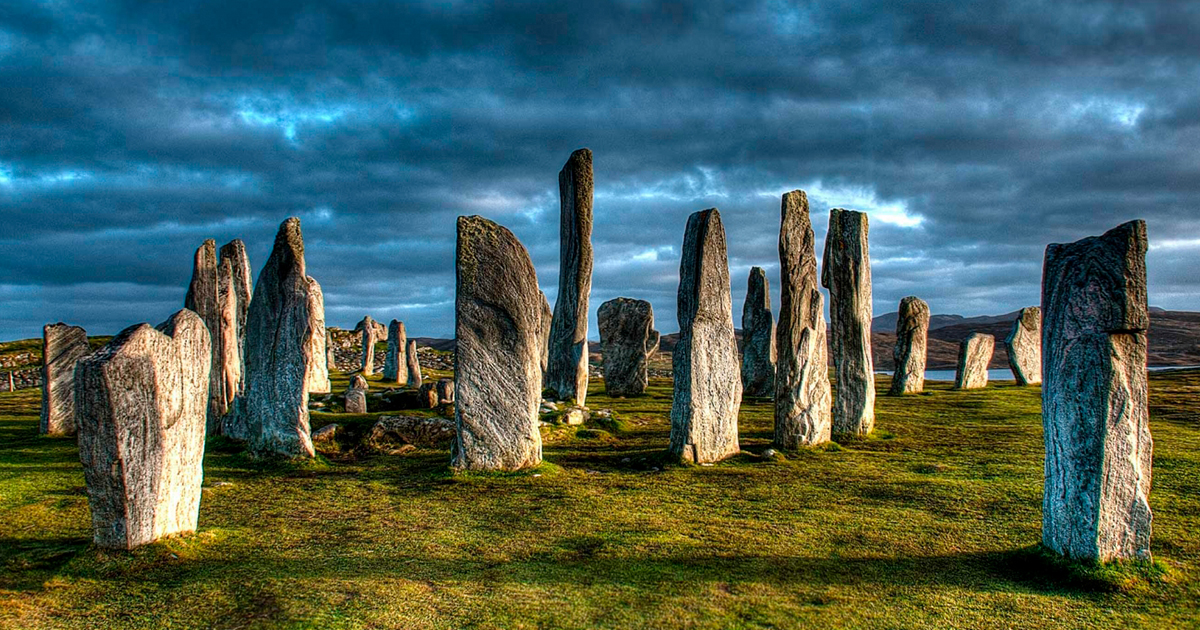 Menhirs in western Europe. Menhirs in western Europe. |
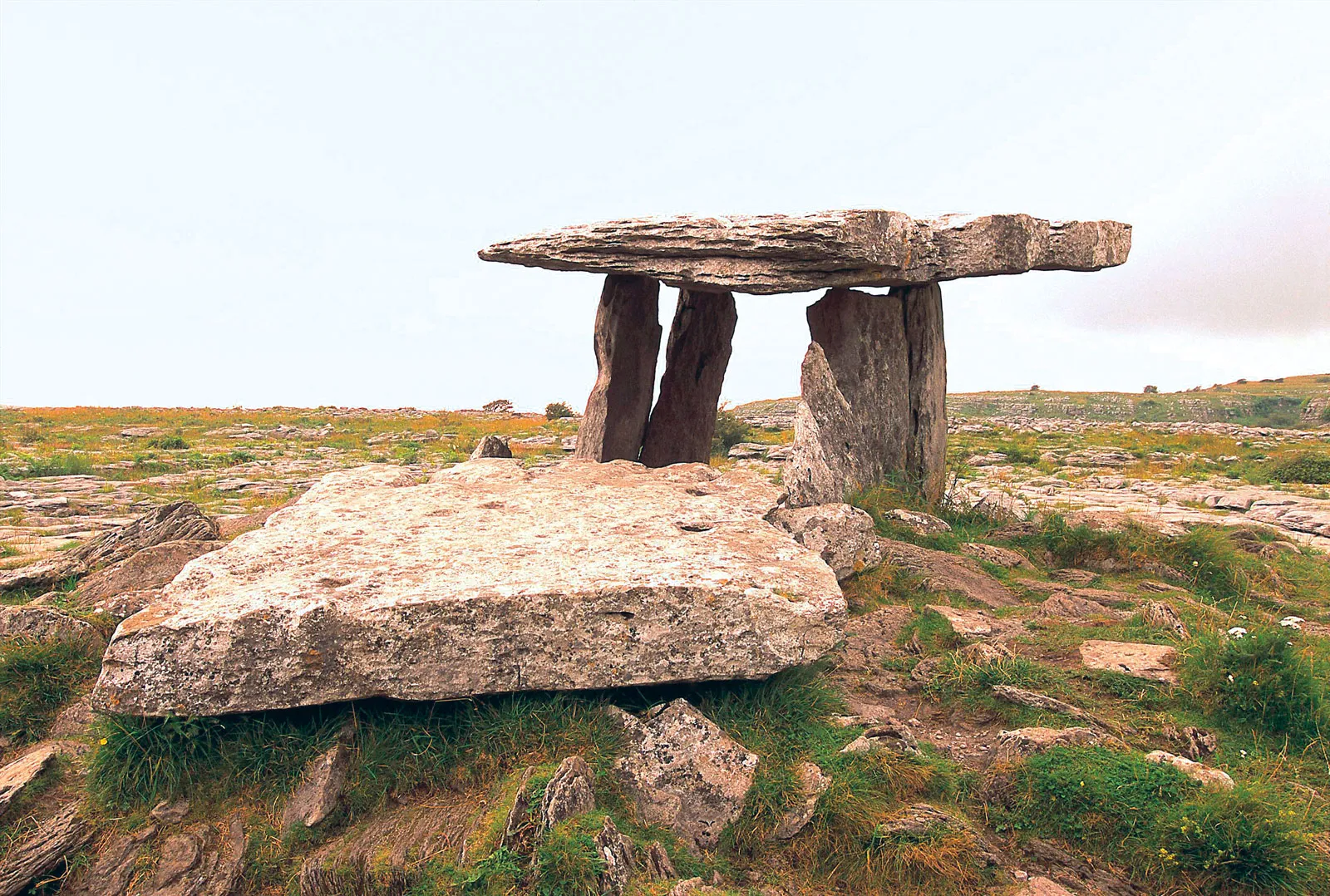 Dolmen and menhir in Ireland. Dolmen and menhir in Ireland. |
Such large stones are sometimes laid out in a circular format known as a cromlech. One well-known example is that of Stonehenge.
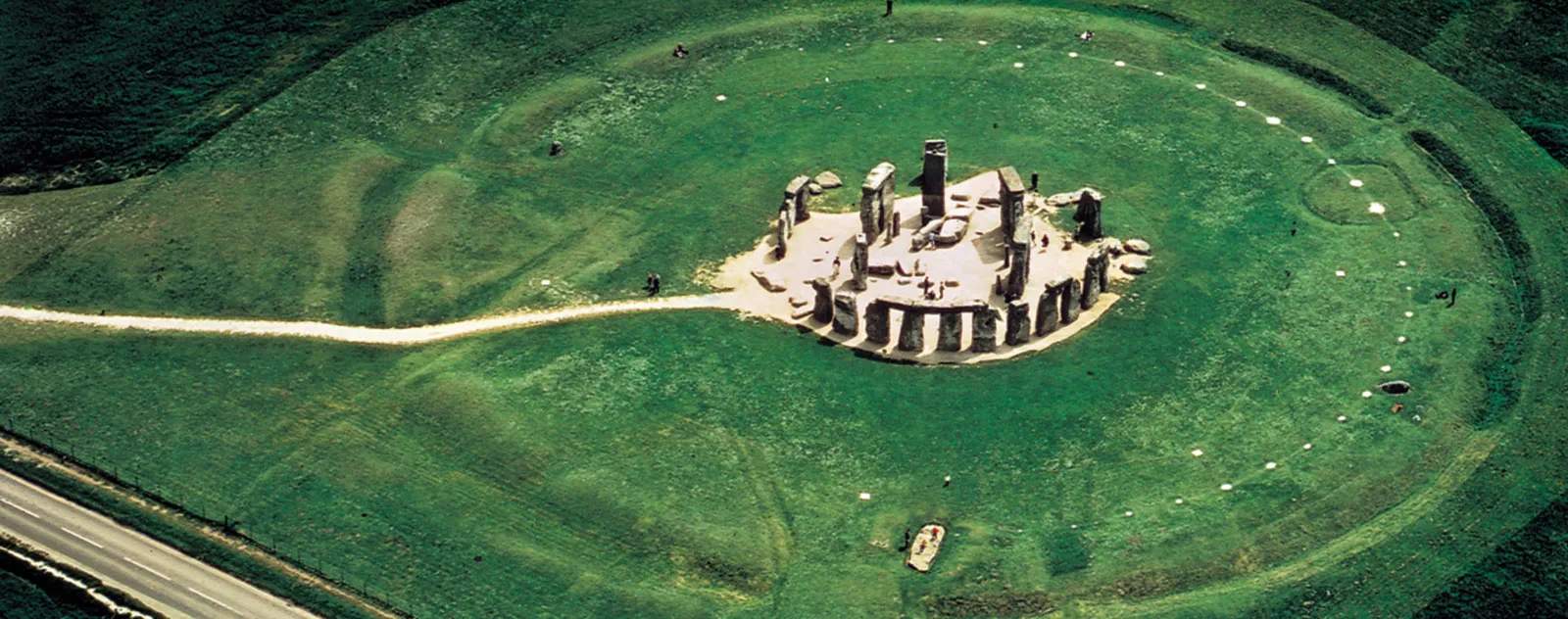 Stonehenge, in England, is about four fifths a mile in diameter. In the center is a slab that may serve as an altar. On the eastern perimeter is placed an erect stone that casts a shadow on the "altar" at sunrise of the summer solstice.
Stonehenge, in England, is about four fifths a mile in diameter. In the center is a slab that may serve as an altar. On the eastern perimeter is placed an erect stone that casts a shadow on the "altar" at sunrise of the summer solstice.We are not likely to understand the art of the past if we are quite ignorant of the aims it had to serve. We cannot hope to understand the strange beginnings of art unless we try to enter into the mind of the primitive peoples and find out what kind of experience it is which makes them think of pictures, not as something nice to look at, but as something powerful to use. Stone Age paintings are the oldest relics of a belief in the power of picture-making.
Okay, so now I've put on some ads from Amazon - from which I may earn a few cents. (2025)





